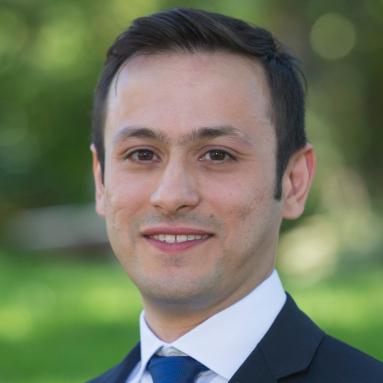WPI Students Recognized for Development of Thermal Energy Storage System
Department(s):
Marketing CommunicationsMassachusetts Clean Energy Center (MassCEC), the state’s clean energy and climate tech economic development agency, has released a video featuring three students and one of their faculty advisors as part of an educational campaign to highlight careers that support a transition to clean energy and the achievement of climate-related goals.
The video, Future Engineers: Learning and Innovating, spotlights the student team’s development of a prototype for a thermal energy storage system. Christiana Kearns ’25 (mechanical engineering), Matthew Lydon ’25 (mechanical engineering and mathematical sciences), and Rebekah Shields ’25 (mechanical engineering) have designed a modular system that consists of a cylinder filled with sand. The system draws energy in from the electric grid or a source such as solar panels, heats up the sand to store the thermal energy inside the cylinder, and releases it when needed by using water pipes that run through the cylinder. The goal of the system is to provide an accessible in-home system that could provide a reliable, efficient, and affordable heating option.
The team, advised by Mehdi Mortazavi, associate teaching professor of mechanical and materials engineering, and Burt Tilley, professor of mathematical sciences, also designed and performed computational and mathematical models and experiments using sensors to measure the thermal conductivity of the system.
The students began their work on the concept in Mortazavi’s class on heat transfer and continued developing the system for their major qualifying project, Developing a Thermal Energy Storage for Energy Efficiency. In 2024, the project was one of four winners at the JUMP into STEM collegiate building science competition held at Oak Ridge National Laboratory.
“As we decarbonize and move toward intermittent energy sources like solar and wind, it’s becoming more important to be able to store and release energy in order to maintain grid stability and energy independence,” said Lydon. “We want our system to be sustainable, efficient, and available at residential scale.” He said the team is also looking to increase the amount of energy the system can store and the power it can release by using a material other than sand in the cylinder, for example carbon-free concrete or a blend of concrete and metal.
The video is one element in an 18-course curriculum, Massachusetts Climate Careers: Powering the Future, developed in partnership with the Massachusetts Department of Elementary and Secondary Education. The curriculum is designed to help high school students and participants in workforce development programs explore more than 50 career paths in clean energy and climate technology.
“The fact that our project is being used in a curriculum proves to me how much we’ve accomplished so far,” said Shields, who added that being part of a video shoot helped her team improve their ability to present their project. “The video producers taught us how to bring complicated technology to a level a lot more people can understand. It was cool to see how we were able to simplify our explanation of our work.”
“This student-led project is a powerful example of how hands-on, applied learning can equip the next generation with the skills and vision needed to accelerate our clean energy transition,” said Jennifer Applebaum, managing director of workforce development at MassCEC. “By featuring these WPI innovators in our climate careers curriculum, we’re not only highlighting promising technologies, but also inspiring young people across Massachusetts to see themselves as part of the climate solution.”
Mortazavi, who advised the students and appears in the video, said he’s impressed by how quickly the prototype has progressed. “I’m very proud that what started as a student course project became a major qualifying project,” he said, adding that he believes the system’s design could help people save money by charging during off-peak hours when energy rates are lower.
Shields and Lydon say they plan to improve upon their prototype as they continue their studies. Shields is pursuing her master’s degree in mechanical engineering at WPI and Lydon plans to pursue his graduate degree in the same field at WPI once he completes his undergraduate degree.
People



